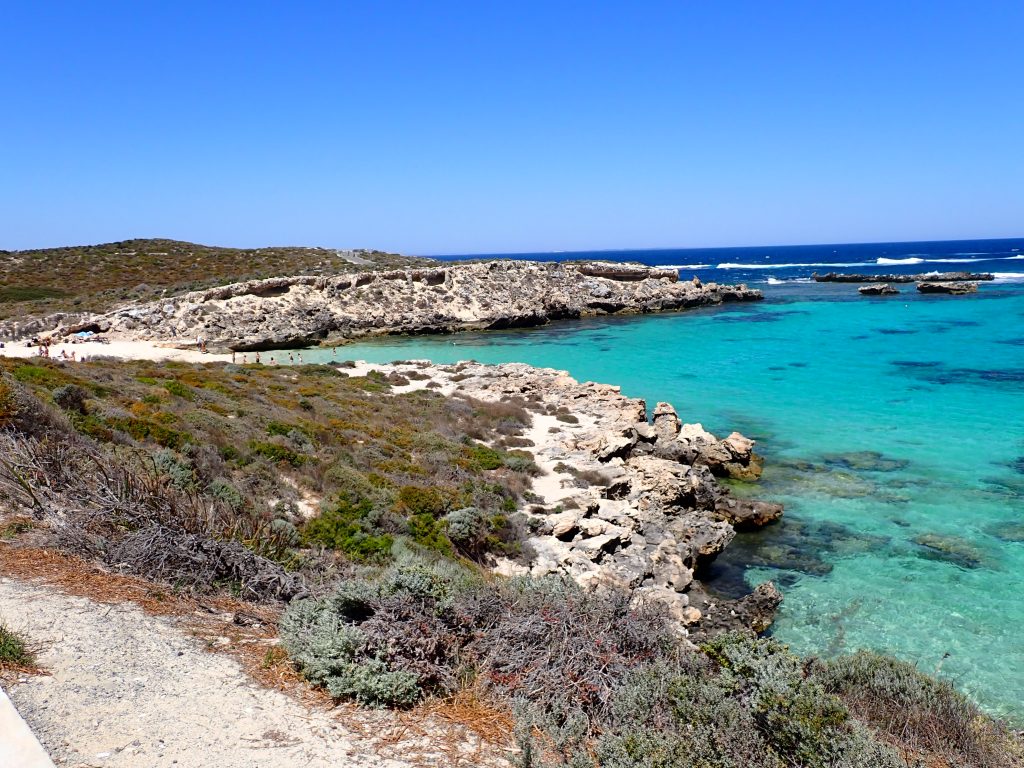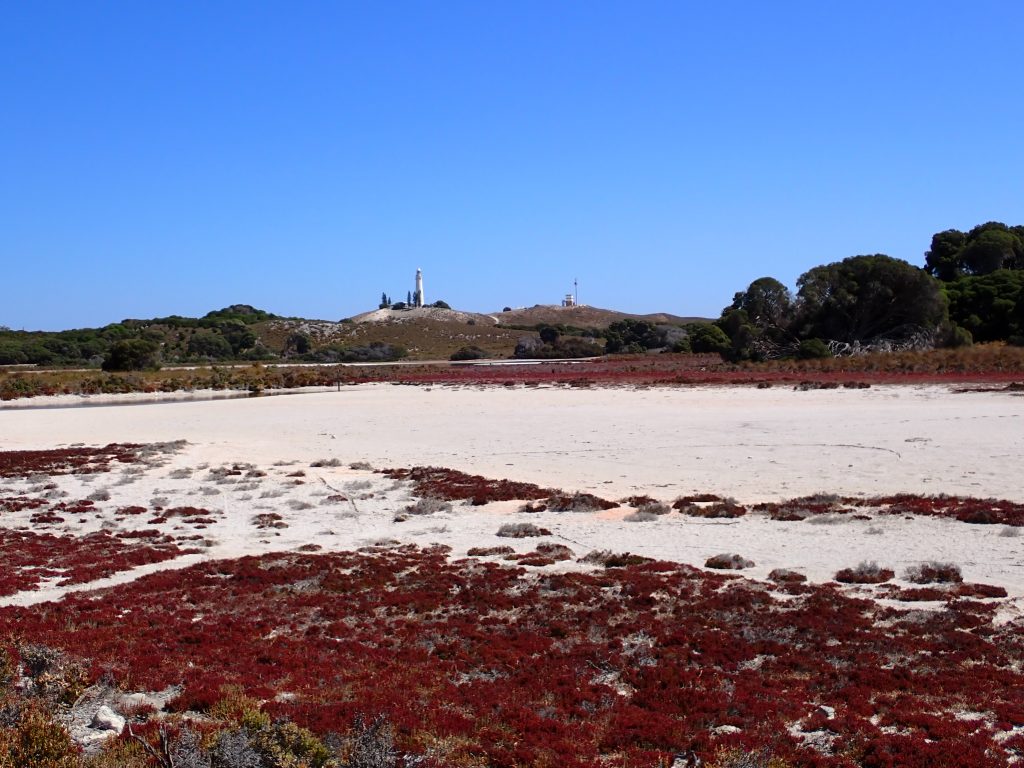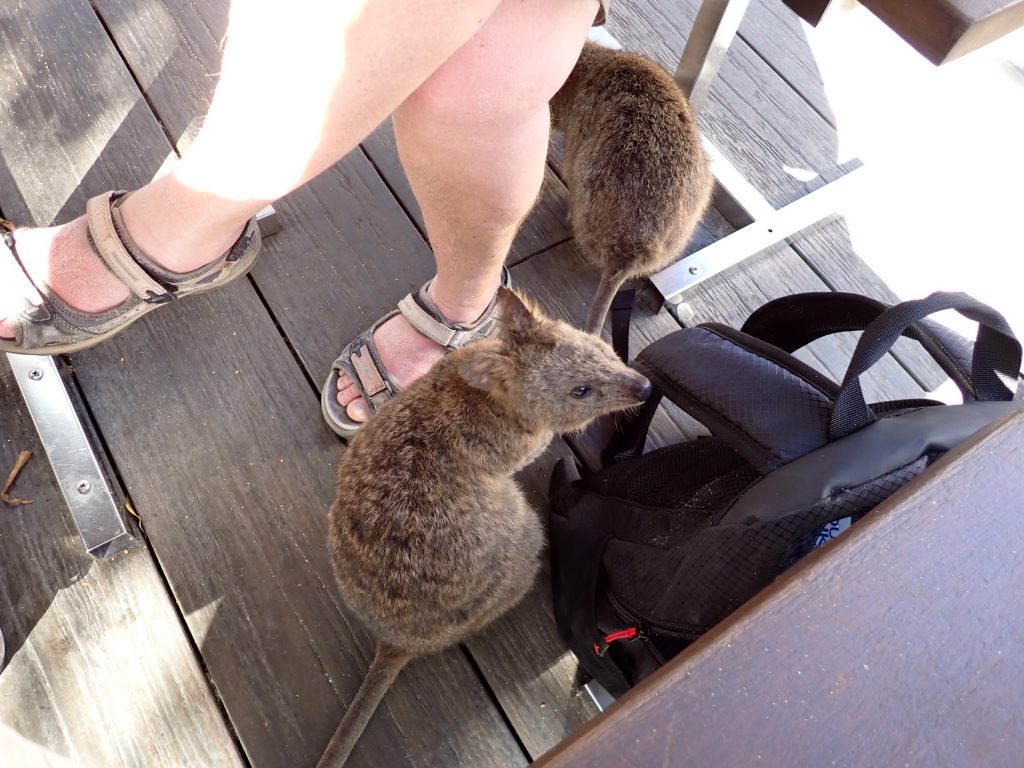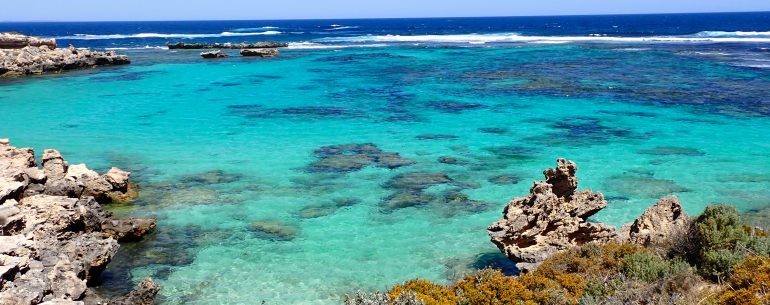Today we decided to have a day out to Rottnest Island. However, never ones to waste time with excess syllables, the locals simply call it Rotto. Rottnest Island is about 11 miles to the west of Fremantle, so to get there we picked up the Rottnest Express ferry (Go Rotto!) from Barrack Street jetty at 8.45. This took us on a great run down the beautiful Swan River for about an hour to Fremantle. There we picked up another load of passengers and headed out to Rottnest. The ferry was quick, but a little bouncy in the prevailing swell. Still, 25 minutes after leaving Fremantle we were drawing into the harbour and jetty on the eastern side of Rottnest Island.
After an initial panic about losing my wallet, they let me back on board and luckily one of the passengers had found it and passed it to one of the crew. That meant I could relax for the day – the stress of trying to cancel cards while 12 miles off the coast doesn’t bear thinking about! So we picked up the bikes and snorkel gear we had hired, jumped on the bikes and set off cycling for about 150 metres. At that point we felt it best to stop for a cup of tea!
Once refreshed we headed off south to Little Salmon Bay on Parker Point. This was around 8km, but suffice it to say that we haven’t cycled in a while so this seemed a lot further making us very glad of a stop on a beautiful sandy beach. This was recommended as a good snorkelling point, so we tried it out. It turns out that there is a good reason why clowns have large shoes – trying to walk with huge flippers on is at best inelegant and at worst highly comical. I went for the latter …. Still, once in the water, it was worth the embarrassment. The water was beautifully clear and with lots of rocks, the variety of fishes was extensive.

After some lunch on the beach we carried on cycling across the centre of the island past Wadjemup lighthouse. The site on the island for the lighthouse was selected by Lieutenant John Stokes – the first officer on HMS Beagle. The Beagle visited Fremantle 7 times during their trip surveying the Australian coast between 1843 and 1847 and as part of this process they chose the site on Rottnest Island for the lighthouse. This was expressed in Stokes’s journal as being “bearing N76°W (true) twelve miles and a quarter from the Freemantle gaol.” It seems that the gaol would have been the most prominent navigational marker at the time! The lighthouse was finally built in 1849 to try and help provide safe passage for ships to Fremantle and was Australia’s first rotating beam lighthouse. It is the fourth oldest lighthouse on the continent.
The road across to the north of the island takes you past a series of salt lakes. These take on different colours during the course of the year as the algal growth changes. At its peak, the growth will turn the lakes various shades of pink, but by the time we went past the pink hues were fading as the lakes evaporated.

A further few kilometres brought us to Little Parakeet bay where it seemed only right to have another swim and snorkel. The snorkelling was not as good as previously, but the swim was very refreshing.
Once back at the main Thomson Bay settlement we handed the bikes and snorkelling gear back and decided to head off quokka spotting. The quokka is officially called a small macropod of the genus setonix. Unofficially it is a pint-sized kangaroo. Like other marsupials it is nocturnal and herbivorous and Rottnest Island is one of the largest populations. Before going quokka spotting we decided that another cup of tea was in order, so we headed to the Rottnest bakery. All shops in the settlement have quokka gates to try and prevent quokkas getting in, but as soon as sat down with our drinks, we realised how effective those were as two quokkas came over and started ferreting around by our feet. They have become quite well acclimatised to people and quite savvy about anti-quokka gates.

In fact it is the quokkas who have given rise to the name Rottnest Island. The Dutch were the earliest explorers of Western Australia and in 1696, the Dutchman Willem de Vlamingh mistook the quokkas for giant rats, and so renamed the island ‘t Eylandt ‘t Rottenest, which means “the rat nest island” in Dutch. From there it got turned into Rottenest (Rat’s nest) and then Rottnest Island.
